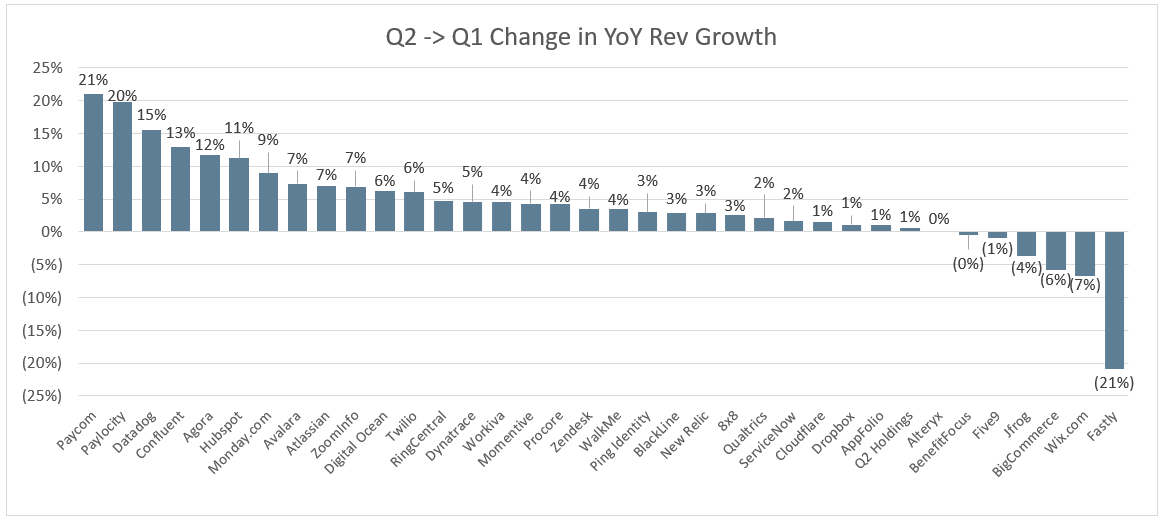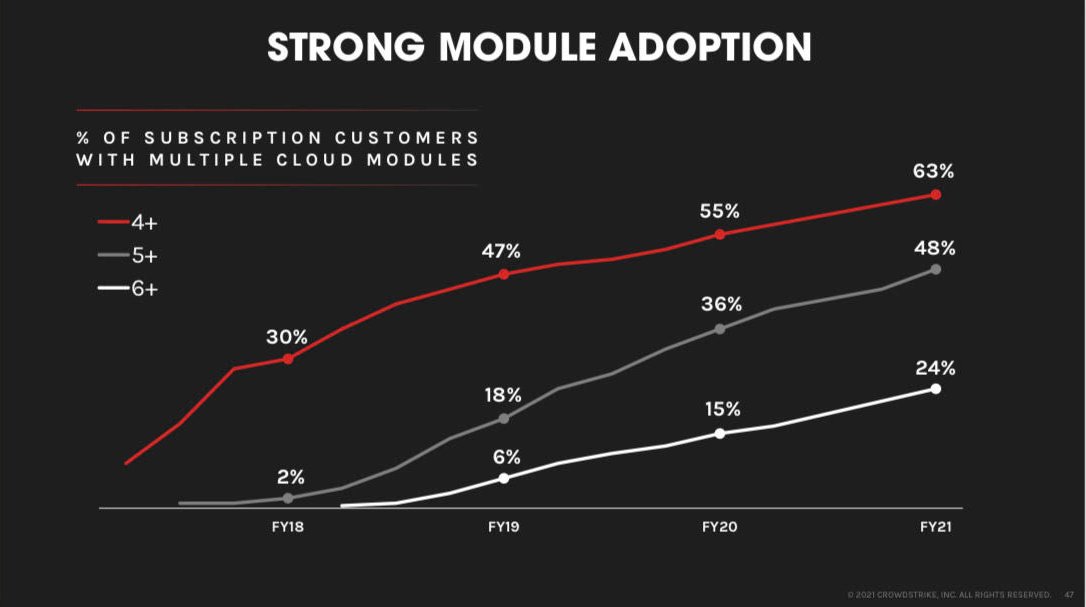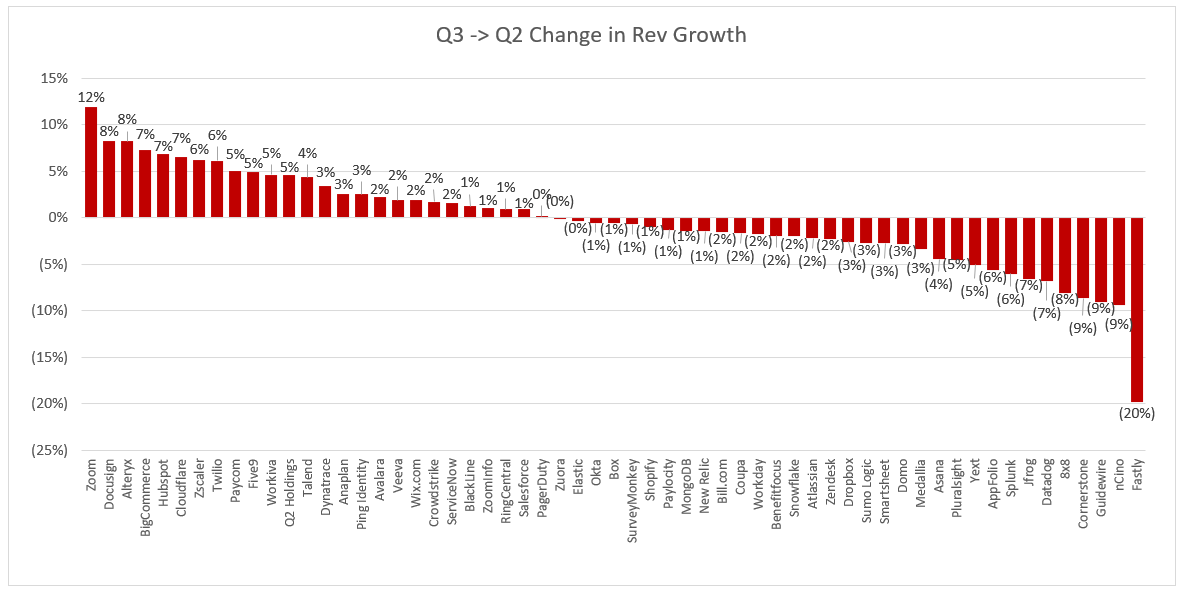
Some confusion after hours in Snowflake. For some extra commentary on the Snowflake RPO figure (lots of talk about it this quarter), I'd point people to the pre-earnings research note Karl Keirstead at UBS published a few days ago. Screenshot below: $SNOW 

To try and explain this further - RPO measures the aggregate total unrecognized contract value from all customers. Let's say a company had one customer that signed a $100k one year deal. After 6 months, the RPO would be $50k. this represents the remainder of the deal, or 6 months
Let's say instead that the same customer signed a $1M ten year TCV deal. The ACV is the same ($100k / year). However, after 6 months, this one customer would have a RPO of $950k (95% left on the 10 year deal, or 114 months of a 120 month deal)
The point here is that same customer who will pay $100k / year has a very different RPO based on the length of the contract. And this is an important factor of RPO - it doesn't take into account contract length.
Sometimes companies disclose a one year RPO figure (RPO looking only 1 year out). I think this is a better metric to track as it normalizes RPO for contract lengths more than RPO in a vacuum. Especially for companies going through a mix shift in contract lengths
So why is this relevant for Snowflake? As the research note points out in Q2 last year Snowflake started offering SPIFS (think of these as extra incentives for sales reps) to close multi year deals instead of single year deals - mini "bonuses" for closing multi year deals
As you can imagine, if reps get paid more for closing multi-year deals vs one year deals, the percentage of multi-year deals will go up!
This means that starting in Q2 last year the RPO started to go WAY up. The historical RPO from prior quarters primarily consisted of 1 year deals, while the RPO going forward would include a higher percentage of multi year deals.
As I mentioned earlier, multi year deals will greatly increase the RPO. So the growth in RPO was kind of comparing apples and oranges. One period had many multi year deals, while the historical periods didn't. So the RPO growth looked incredibly high for the last 4 quarters
However, this quarter was the first quarter where Snowflake "lapped" the quarter from last year where the sales reps were incentivized heavily for selling multi year deals. The RPO this quarter was more of an apples to apples comparison
So the deceleration in RPO is really driven by the following:
Q1 (last quarter) RPO compared a quarter with heavier percentage of multi year deals to a period without
Q2 (this quarter) RPO compared two quarters with a similar mix shift of multi year deals
Q1 (last quarter) RPO compared a quarter with heavier percentage of multi year deals to a period without
Q2 (this quarter) RPO compared two quarters with a similar mix shift of multi year deals
This is all a bit of an oversimplification, however I think it's important to lay out. There was lots of confusion in the after-hours price movement of Snowflake.
I think it's easy to look at RPO decelerating from 206% last Q to 122% and get worried.
I think it's easy to look at RPO decelerating from 206% last Q to 122% and get worried.
However, this really isn't a fundamental business issue. It's really just a quark in how RPO is calculated, driven by a mix shift in multi-year deals due to sales rep compensation
A bit of an unorganized ramble, but hopefully this make sense!
A bit of an unorganized ramble, but hopefully this make sense!
• • •
Missing some Tweet in this thread? You can try to
force a refresh










